Introduction
How Long Should Guinea Pigs Nails Be: Guinea pig nails, much like our own fingernails, continually grow. If left unattended, they can become excessively long, leading to a range of issues for your furry friend. As responsible pet owners, it is our duty to ensure the well-being of our guinea pigs, and this includes maintaining their nail health. Striking the right balance is essential, and this explore the intricacies of this particular aspect of guinea pig care.
At first glance, the task of trimming your guinea pig’s nails might seem straightforward. However, it’s far from it. Cutting their nails too short can result in painful bleeding, while allowing them to grow too long can lead to deformities and discomfort. Finding the middle ground is crucial, and it requires knowledge, skill, and patience. The importance of nail care for guinea pigs and the various factors that influence the length of their nails.
We will discuss the telltale signs that it’s time for a trim, the tools and techniques needed for safe nail maintenance, and how to make the process as stress-free as possible for both you and your beloved pet. Understanding the appropriate length for guinea pig nails is a vital component of responsible guinea pig ownership. you’ll be equipped with the confidence to ensure that your guinea pig’s nails are maintained at the perfect length, promoting their overall health and happiness.
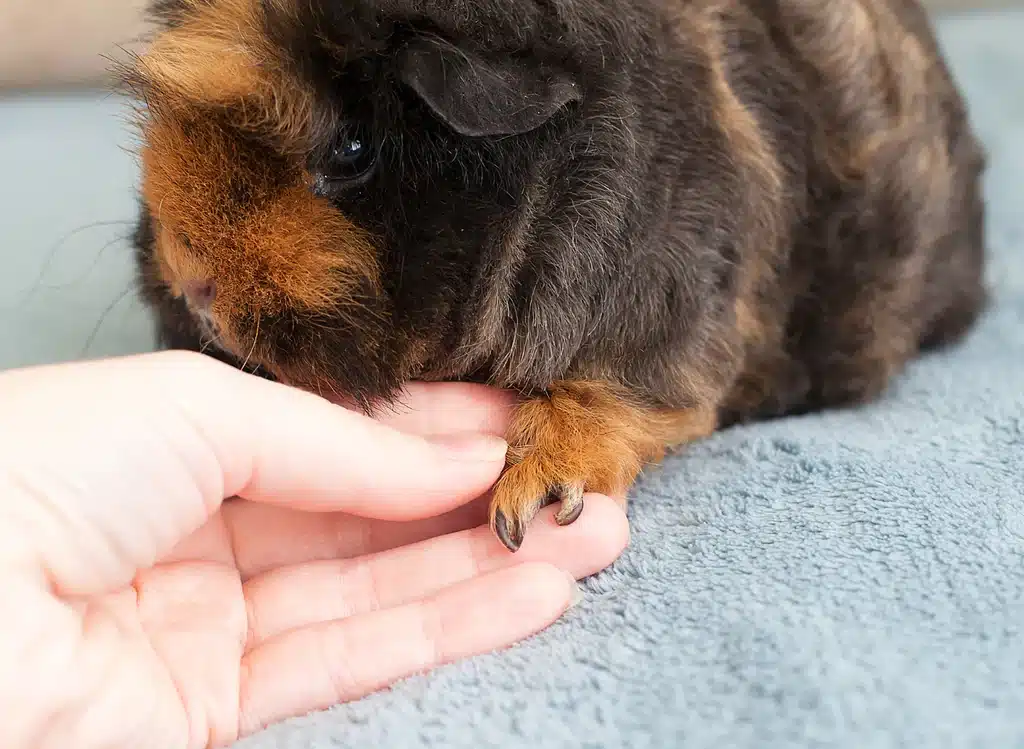
Are my guinea pigs nails too long?
If a guinea pig’s nails are too long, they often start curling underneath their feet and in extreme cases even pierce the paw pads. Now, if you’ve ever touched your piggies’ paws, you’ll know how soft and sensitive they are.
Regular Checks: Make it a habit to check your guinea pig’s nails at least once a month. Pay attention to the hind legs, as they tend to have longer nails than the front ones.
Proper Trimming: If you notice that the nails are getting too long, it’s time to trim them. Use a small animal nail clipper or grinder designed specifically for guinea pigs.
Seek Professional Help: If you’re unsure about trimming your guinea pig’s nails or are concerned about hurting them, seek assistance from a veterinarian or professional groomer experienced with guinea pigs.
Styptic Powder: Keep styptic powder on hand to stop bleeding in case you accidentally cut the quick (the blood vessel inside the nail). If bleeding occurs, apply the powder and apply gentle pressure.
Be Gentle: Approach nail trimming with patience and a gentle touch. Guinea pigs can be sensitive about their paws, so try to keep them calm throughout the process.
Positive Reinforcement: Reward your guinea pig with a small treat or some extra love and cuddles after a successful nail trimming session to create positive associations.
Is it OK to cut guinea pig nails?
Guinea pigs are generally docile and seldom bite; however, they are easily frightened and will try to avoid capture or being held. Guinea pigs require regular nail trimming. The frequency can vary among animals but should occur once a month at a minimum.
Gather the Right Tools: You’ll need guinea pig-specific nail clippers or grinders, styptic powder (to stop bleeding if you accidentally cut too much), and a towel to wrap your guinea pig in for better control.
Choose the Right Time: Pick a time when your guinea pig is calm, like after they’ve had a meal or during their quiet hours. It’s crucial to have a stress-free environment.
Be Gentle: Handle your guinea pig gently, and reassure them with soothing words and petting. Guinea pigs can be skittish, so patience is key.
Examine the Nails: Look for the quick—the pinkish part inside the nail. Avoid cutting into the quick, as it contains blood vessels and nerves.
Trim Gradually: Start by trimming a tiny bit off the tip of each nail. If your guinea pig’s nails are extremely long, you may need to trim them gradually over several sessions.
Does cutting guinea pig nails hurt?
While the nail itself has no feeling, cutting into the quick can cause pain and may draw blood. If your guinea pig’s nails are light in color or translucent, the quick is the visible pink part.
Proper Tools: Use guinea pig-specific nail clippers or small, sharp scissors designed for pets. This will prevent splintering or crushing of the nails.
Proper Technique: Trim just the tip of the nail, avoiding the pinkish area called the “quick.” The quick contains blood vessels and nerves and can cause pain and bleeding if cut.
Gentle Approach: Be gentle and patient. If your guinea pig becomes stressed or anxious, take a break and try again later.
Reward System: Offer treats or positive reinforcement after the nail-trimming session to associate it with something positive.
Seek Professional Help: If you’re unsure or uncomfortable trimming your guinea pig’s nails, consider seeking help from a veterinarian or a professional groomer.
Why is my guinea pig vibrating?
A vibrating guinea pig can mean a few things. It can mean that they are happy, angry, threatened, stressed or cold. Once you understand your guinea pigs behaviour more you’ll begin to notice if this is a positive or negative mood.
Purring
One common reason for guinea pigs to vibrate is purring. Guinea pigs can make a soft, rhythmic sound that resembles purring when they are content and relaxed. This purring is often accompanied by the guinea pig’s body vibrating slightly. Purring is a sign of happiness and comfort, and your pet may do this while being petted, cuddled, or simply enjoying their surroundings.
Fear or Anxiety
On the flip side, guinea pigs may also vibrate when they are frightened or anxious. In stressful situations, such as encountering a loud noise or an unfamiliar environment, a guinea pig might exhibit trembling or vibrating as a sign of distress. If you notice your guinea pig vibrating in such situations, try to identify the source of their anxiety and remove it if possible to help them feel more at ease.
Cold or Chills
Guinea pigs are sensitive to temperature changes, and if they are feeling cold or experiencing chills, they may start vibrating or shivering to generate warmth. To ensure your guinea pig’s comfort, make sure their living environment is at an appropriate temperature, and consider providing extra bedding or a heat source during colder seasons.
Illness or Pain
Vibrating can also be a sign of illness or discomfort in guinea pigs. If your guinea pig is displaying unusual behaviors like continuous trembling or vibrating and it’s accompanied by other concerning signs like a loss of appetite, lethargy, or changes in stool consistency, it’s crucial to consult a veterinarian promptly. Illness or pain should be ruled out and addressed as soon as possible.
Communication
Guinea pigs use various sounds and body language to communicate with each other and with their owners. In some cases, vibrating may be a form of communication or a response to other guinea pig sounds. Observing your guinea pig’s overall behavior and any accompanying vocalizations can help you decipher their intent and emotions.
Why are my guinea pigs nails so sharp?
While they may all look similar, these nails can be very different depending on the age of the guinea pig; young piggies tend to have very sharp nails while older piggies tougher and more brittle ones. Regardless of the age though, we’d suggest to aim for a nail trim once-a-month.
Natural Growth
Guinea pig nails, like those of many small mammals, naturally grow continuously throughout their lives. In their natural habitat, guinea pigs would wear down their nails through digging, running, and other activities. However, in captivity, where they often spend more time on softer surfaces, their nails can grow longer and become sharp.
Diet and Genetics
The diet and genetics of your guinea pig can influence the growth rate and texture of their nails. Some guinea pigs may have naturally sharper nails due to their genetic makeup. Additionally, a well-balanced diet that includes adequate nutrients like Vitamin C can contribute to healthier nails.
Lack of Exercise
Guinea pigs need regular exercise to help naturally wear down their nails. If your guinea pigs are not provided with enough space to move around or don’t have access to a variety of textures in their environment (like rough rocks or logs for them to walk on), their nails can become sharper over time.
Incorrect Cage Flooring
The type of flooring in your guinea pig’s cage can affect the condition of their nails. Wire-bottomed cages or cages with rough, abrasive flooring materials can contribute to faster nail growth and sharpness. Consider using softer bedding or mats to provide a more comfortable and nail-friendly environment.
Fear or Stress
Guinea pigs may become stressed or anxious in certain situations, leading to heightened alertness and more active behavior, including scratching and digging. This increased activity can also contribute to faster nail growth and sharpness. Ensuring a calm and stress-free environment can help mitigate this issue.
Do guinea pigs nails bleed?
Don’t panic if this happens. While it will bleed and hurt your guinea pig for just a moment, it’s not disastrous and you can stop the bleeding easily using various methods: Styptic powder can be applied to the nail tip that is bleeding.
Use Proper Tools: Invest in guinea pig-specific nail clippers or small, sharp scissors designed for pets. These tools are designed to minimize the risk of injuring the quick.
Identify the Quick: If your guinea pig has light-colored nails, the quick may be visible as a pinkish area within the nail. However, with darker nails, it may be more challenging to see. Shine a light through the nail to help identify the quick’s location.
Trim Conservatively: Trim only the tip of the nail, leaving a safe margin from the quick. Gradually trim small amounts and stop immediately if you see any sign of the quick.
Have Styptic Powder Ready: Keep styptic powder or a styptic pencil on hand while trimming. If bleeding occurs, apply a small amount to the bleeding area to help stop it. You can find styptic powder at most pet supply stores.
Why do guinea pigs lick you?
If your guinea pig starts licking you, this could be a very good sign that he or she likes you. It’s generally regarded as a very affectionate gesture. In the same way that they show affection through grooming one another, they could well be attempting to groom you to!
Taste and Exploration: Guinea pigs are naturally curious animals, and they use their mouths to explore their surroundings. When they lick you, they may be investigating the taste, scent, and texture of your skin, hair, or clothing. It’s their way of getting to know you better.
Bonding and Affection: Licking is often a sign of affection and bonding in guinea pigs. Just like other pets, such as dogs and cats, guinea pigs can form strong emotional attachments to their owners. Licking can be their way of expressing love and trust. If your guinea pig licks you, it’s a heartwarming indication that they feel comfortable and safe in your presence.
Grooming Behavior: Guinea pigs are meticulous groomers, and they often groom each other as a social bonding activity. When a guinea pig licks you, they may see you as a part of their social group and may be trying to groom you as a sign of inclusion and care.
Communication: Guinea pigs have limited ways of communicating with humans, and licking can be a way for them to interact and convey their feelings. It’s a non-verbal form of communication that says, “I like you,” “I trust you,” or “I want your attention.”
Salt Intake: Guinea pigs require a certain amount of salt in their diet, and they may occasionally lick your skin if they detect salt on it. This is a natural behavior as they seek out essential nutrients.
Is it OK to kiss guinea pigs?
If you’re wondering whether you can bestow your piggy with smooches, then know that guinea pigs are typically happy to be kissed if they’ve formed a trusting bond with you. However, if your guinea pig is new to your home or appears particularly nervous, then it’s best to wait a while until they feel more comfortable.
Petting and Cuddling: Guinea pigs enjoy gentle petting and cuddling. Stroke their fur, offer chin rubs, or hold them close to your chest to provide comfort and companionship.
Talking and Singing: Guinea pigs recognize the sound of your voice and often find it soothing. Spend time talking or singing softly to your pets to create a strong bond without physical contact.
Offer Treats: Treats like fresh vegetables or fruits can be a great way to bond with guinea pigs. Hand-feed them these treats to build trust and affection.
Playtime: Create a safe play area for your guinea pigs and engage in interactive play. Use tunnels, toys, and obstacle courses to stimulate their minds and strengthen your connection.
Respect Their Space: Guinea pigs appreciate having a safe and quiet environment where they can relax and feel secure. Provide a comfortable cage or enclosure with hiding spots to ensure their well-being.
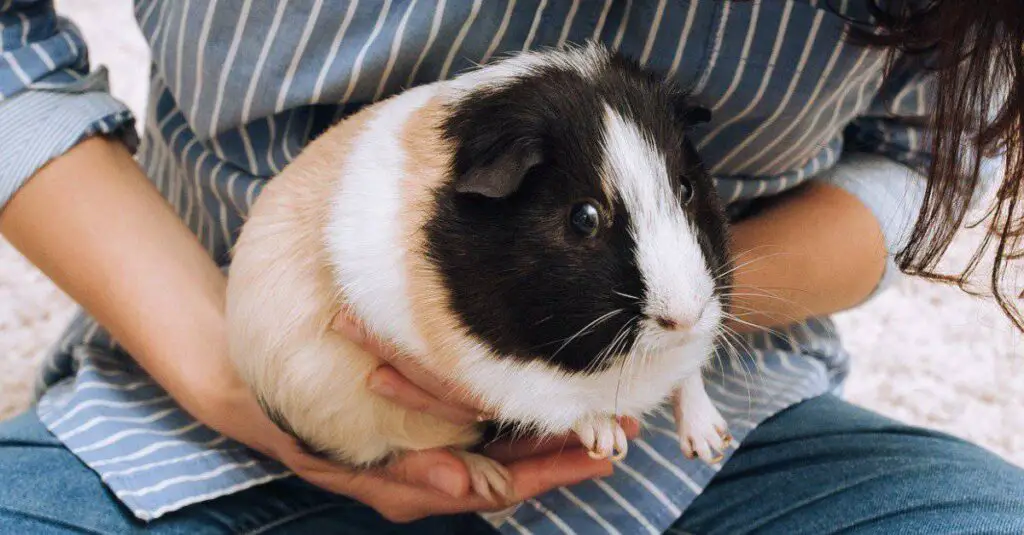
Conclusion
As responsible pet owners, it’s our responsibility to monitor our furry companions for signs that their nails may be getting too long. These signs may include difficulty walking or splaying their toes, discomfort when walking or running, or even the nails curling under their paws. If any of these signs appear, it’s essential to take action promptly to prevent further complications.
Trimming a guinea pig’s nails can be a daunting task, especially for first-time owners. However, with the right tools, techniques, and knowledge, it can be done safely and effectively. Proper nail care not only prevents physical discomfort and deformities but also minimizes the risk of injury, as overly long nails can get caught in bedding or other objects in their environment.
That every guinea pig is unique, and there is no one-size-fits-all answer to how long their nails should be. The frequency of nail trimming will vary from one guinea pig to another, depending on their growth rate and activity level. Regularly checking their nails and being attentive to their behavior is key to determining when it’s time for a trim. In caring for your guinea pig’s nail, always prioritize their comfort and safety. If you are uncertain about trimming their nails, seek guidance from a veterinarian or an experienced guinea pig owner who can provide hands-on assistance or advice.

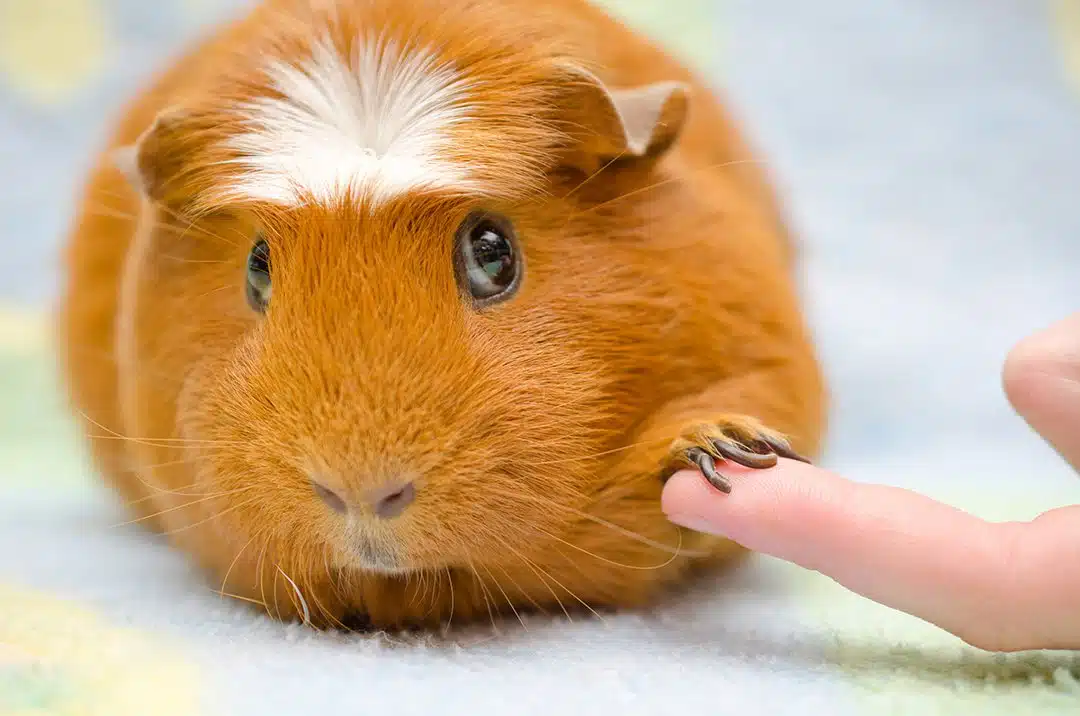

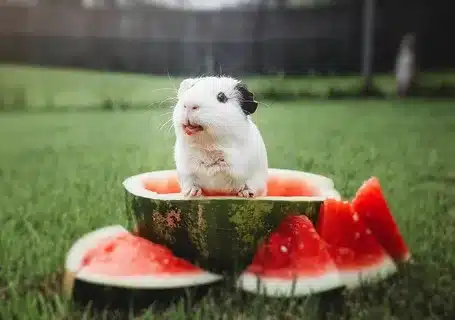
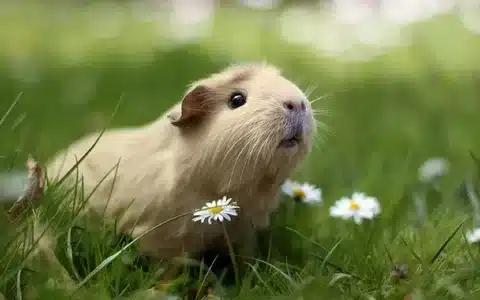
No Comments